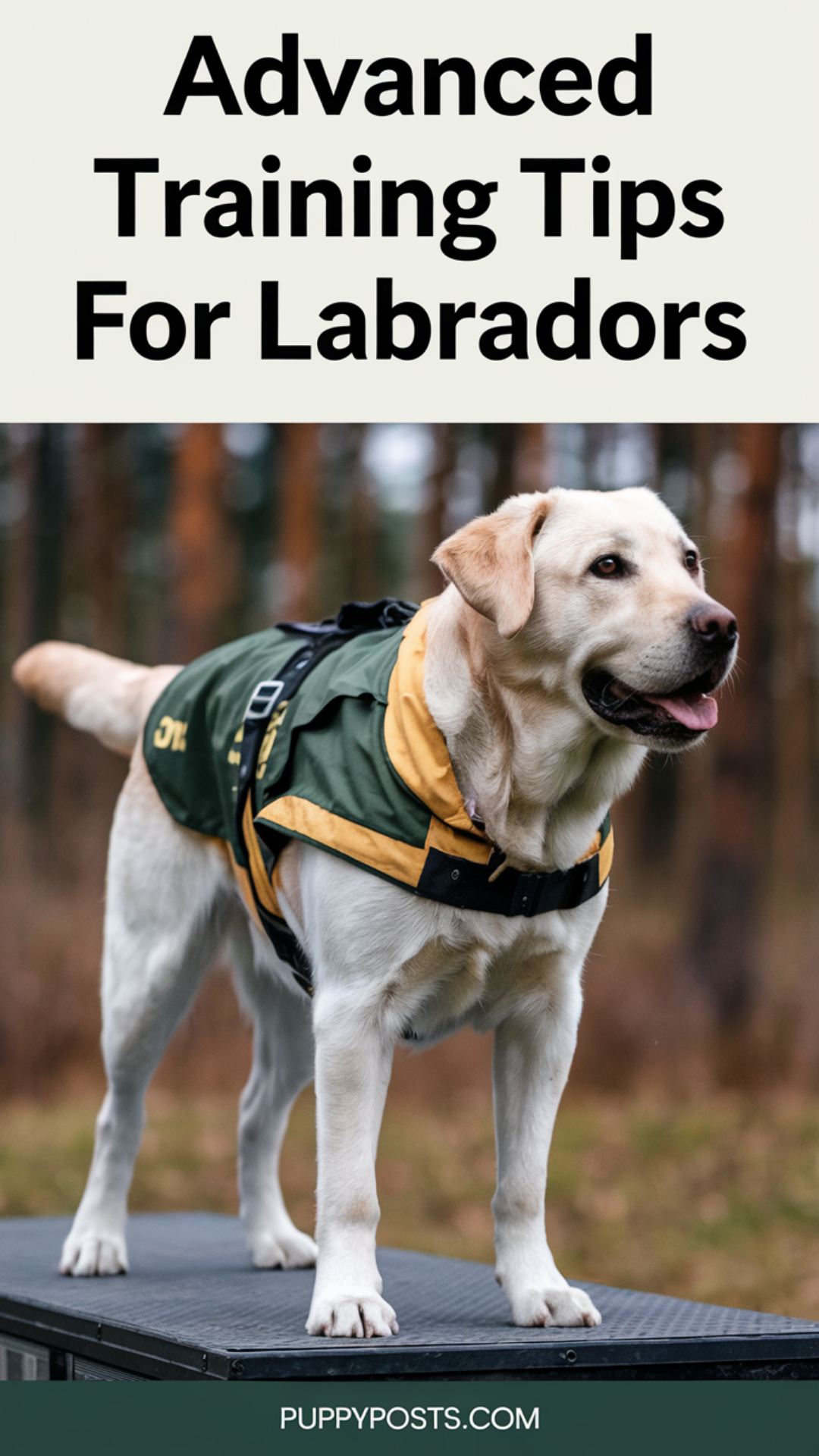Advanced Training Tips For Labradors
As a veterinarian with over a decade of experience—and someone who runs a sanctuary for stray dogs and cats—I can tell you one thing with certainty: Labradors are smart, energetic, and eager to please. But if you don’t train them properly, they’ll turn that energy into chewing your furniture, jumping on guests, and dragging you down the street on walks.
A Labrador without structure is a Labrador looking for trouble. So, if you’ve already got the basics covered (sit, stay, come), it’s time to move into advanced training. This isn’t just about obedience—it’s about sharpening their focus, reinforcing discipline, and keeping that sharp mind engaged.
Here’s how you do it.

1. Off-Leash Control: Teaching Your Lab to Stick With You
Labradors love to run. If you don’t train them properly, they’ll take off after a squirrel and ignore every command you give. Advanced obedience means they listen—even without a leash.
How to Train It:
- Start with a long lead – Use a 30-foot leash to practice recall and commands with some control.
- Train in distracting environments – A dog that only listens in your backyard isn’t actually trained. Practice in parks, trails, and crowded areas.
- Use an e-collar if needed – When used correctly (not as punishment but as reinforcement), an e-collar can help fine-tune off-leash reliability.
A well-trained Labrador should come when called the first time, no matter what’s going on.
2. “Place” Command: Teaching Boundaries and Patience
Labs are social dogs, which is great—until they’re constantly underfoot or jumping on visitors. The “Place” command teaches them to stay in a designated spot until you release them.
How to Train It:
- Pick a dog bed or mat and guide your Lab onto it.
- Say “Place” and reward them when they stay there.
- Increase the duration before releasing them.
- Add distractions—doorbells, dinner time, guests arriving.
A Labrador that knows “Place” won’t be begging at the table or knocking over your guests.
3. Advanced Recall: No More Ignoring You
A Lab that doesn’t come when called is a problem waiting to happen. At an advanced level, recall should be instant—no hesitation, no second guessing.
How to Train It:
- Make coming to you the best thing ever – Use high-value rewards (favorite treats or toys).
- Increase distance – Call them from another room, across the yard, or at the park.
- Use a distraction test – Have someone toss a ball or walk another dog nearby. Your Lab should still come to you immediately.
If they hesitate, reinforce the command. No second chances—come means come.
4. Retrieve by Name: Teaching Labs to Fetch Specific Items
Labradors were bred for retrieving, so why not put that instinct to use? With training, they can learn to bring you specific objects—like your keys, the TV remote, or their leash.
How to Train It:
- Start with their favorite toy and give it a name (“Ball,” “Rope,” etc.).
- Say the object’s name as they interact with it. Reward them for picking it up.
- Introduce a second object and repeat the process.
- Test them—say a specific item’s name and see if they fetch the right one.
This is a great mental workout and a useful skill to have.
5. Swimming Drills: Training in the Water
Labs were born to swim, but that doesn’t mean they know how to do it safely. Controlled water training strengthens endurance and reinforces commands.
How to Train It:
- Start in shallow water – Let them get comfortable before going deeper.
- Practice water retrieves – Toss a floating toy and have them bring it back.
- Teach recall in the water – Make sure they come when called, even mid-swim.
A well-trained Lab in the water is a confident, controlled swimmer—not a reckless one.
6. Heel Command: Perfecting Loose-Leash Walking
If your Labrador pulls on the leash, they’re walking you—not the other way around. The “Heel” command teaches them to stay at your side, no matter the distractions.
How to Train It:
- Use structured walks – No sniffing, no wandering. Just controlled walking.
- Change speed – If you slow down, they slow down. If you stop, they sit.
- Practice in high-distraction areas – Other dogs, cars, joggers—your Lab should stay in position no matter what.
If they pull, stop walking. They don’t move forward until they walk correctly.
7. The “Invisible Boundary” Game: Teaching Limits
Ever want your Lab to stop at the front door without bolting outside? This game teaches boundary awareness and prevents dangerous darting behavior.
How to Train It:
- Pick a boundary (a doorway, the edge of the yard, etc.).
- Walk them toward it and say “Wait” before they cross.
- Reward them for stopping. If they try to cross, gently guide them back.
- Practice off-leash once they understand.
A well-trained Labrador won’t need a fence to respect boundaries.
8. Impulse Control Games: Teaching Patience
Labs get excited—sometimes too excited. If they don’t learn impulse control, they’ll snatch food, jump on people, or ignore commands.
How to Train It:
- Food patience – Have them sit and wait before eating, only eating on your command.
- Doorway control – Teach them to wait before going outside. No bolting.
- Greet people calmly – If they jump, ignore them. Only reward calm behavior.
Impulse control turns an excitable Lab into a well-mannered one.
Final Thoughts
Labradors are smart, energetic, and willing to learn—but that doesn’t mean they’ll train themselves. If you don’t challenge them, they’ll challenge you.
Advanced training isn’t about showing off—it’s about building a dog that listens, thinks, and respects boundaries in any situation. A well-trained Lab isn’t just a pet. They’re a reliable, disciplined companion.
So, no shortcuts. No slacking. Put in the work, and you’ll have a Lab that’s as obedient as they are lovable.







